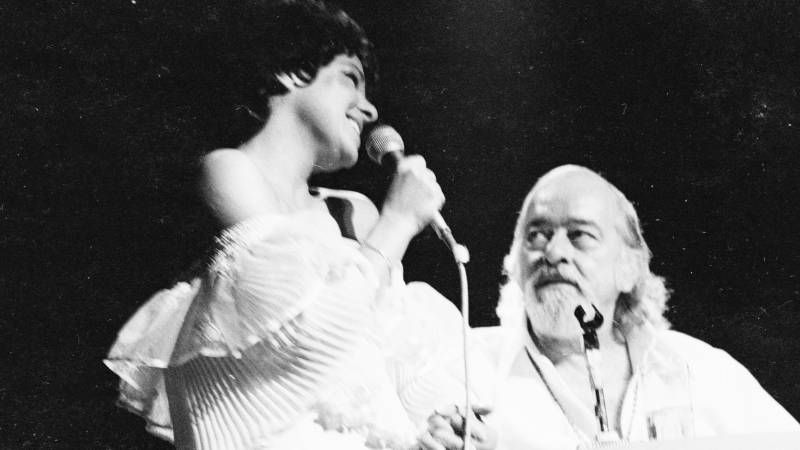It’s a story as old as time: A young woman of child-bearing age must decide whether she wants to marry for love or for for security. And in this case, the young woman is Jagna, a beguiling blond beauty her mother boasts is the “pick” of the village. Jagna’s mother has promised her to Maciej Boryna, a farmer with large tracts of land that grow tremendous amounts of grain. But Jagna, sweet and innocent, thirsts for Maciej’s son Antek, whose passion for poetry matches his desire to prosper as a worker. He’s uncommonly attractive, and compares her to the land that grows his crops, but bowing to social conventions, Jagna agrees to wed the older Boryna.
Furious, Antek vacates himself from the village, only to return for a village dance. There he spots Jagna in an elegant red dress, which prompts him to dance with her in front of his disgraced father. Excited by the embrace, Jagna rediscovers her love for Antek, and vows to meet up with him whenever he calls for her. Maciej, suspicious of his son’s intentions, spots them mid coitus in a barn, and threatens to burn them alive. Worried for his life, Antek hides in a forest, only for Jagna’s reputation to sink. Within months, rumours spread that she has slept with the local mayor, and will spread her legs to any man who takes her fancy. In a delicious twist of irony, Antek has to answer the same question his beloved asked at the start of the film: Should he follow his heart and publicly support Jagna, or should he bow to the conventions of his country, and move on?
Considering the density of the book, it’s no surprise to hear that DK and Hugh Welchman have distilled the narrative for a palatable runtime, but what they’ve delivered captures both the aesthetic elements and the emotional undercurrents of the Nobel Prize winner. Using a painted animation technique, the Welchman’s unveil a Polish village drowning under snow during Winter, and suffocating under hot flames in Summer. Jagna is the most beautiful person in the village, and offers the elderly women a subject that amuses and horrifies them in equal measure. Part of it is jealousy, but Jagna’s headstrong nature does her little favours in an era when Catholicism governed its subjects with an iron fist. It’s her dangerous qualities that attracts Antek to her, despite being happily married himself, and fittingly he lies with her in the countryside, free from squabble and strife.
Visually, the paintings – carefully applied over 200,000 hours of filming – are spectacular, emulating every season with careful attention and acumen. Out of the four, the village looks prettiest during Spring, which might explain why the younger generation walk around with fewer outfits. While the majority of villagers make do with what they have, Jagna walks freely in the dresses her husband has spoiled her with. Naturally, it causes resentment, and in one almost blinding moment, she has to face the wrath of a horde of angry villagers who detest her entitlement and free-spirited nature.
The film makes terrific use of colour, paying particularly attention to the outfits worn by the high-profile wives who walk the town streets. There are flashes of blues, greens, yellows – but nothing tops the red dress Jagna wears. It’s almost dripping with blood, as if recalling the hard labour that went into crafting such a tender painting by hand. Stylistically, The Peasants holds up well, but the passion that cements the four disparate chapters together (each named after a Season of the year) that makes for compelling viewing.
Whether it’s that first kiss, or the purging sex they enjoy under an abandoned shed, there’s no denying the chemistry that exists between Jagna and Antek. In some ways, their love recalls the weather outside: When it’s snowy, they hold each other close, in an effort to contain what little warmth is in their graps, but when it’s warmer, they walk by a river, the storks exhibiting the freedom that exists in their hearts. But unlike the birds, the pair are duty bound to live out their lives in the village that has wronged them. No wings can carry them onward. Like the crops that keeps Poland fed, Jagna and Antek must contain their love buried beneath the soil.
The Peasants just premiered in the Baltic Competition of the 27th Tallinn Black Nights Film Festival. In UK cinemas on Friday, December 8th. On VoD on Monday, March 25th









